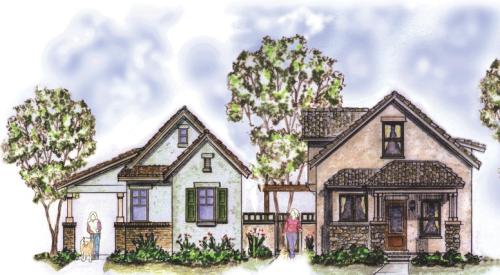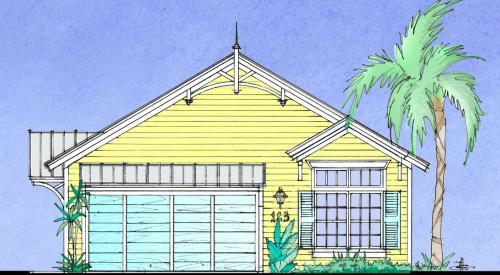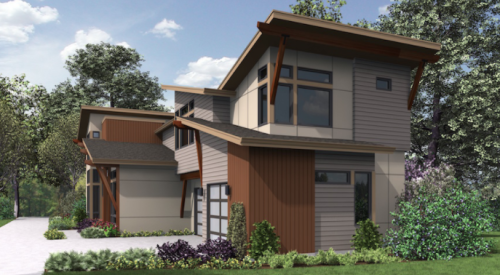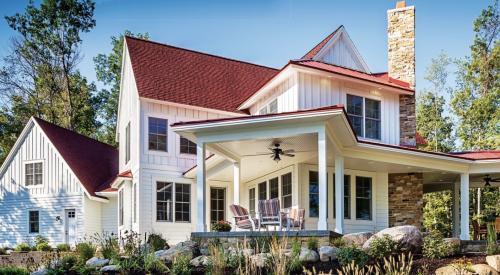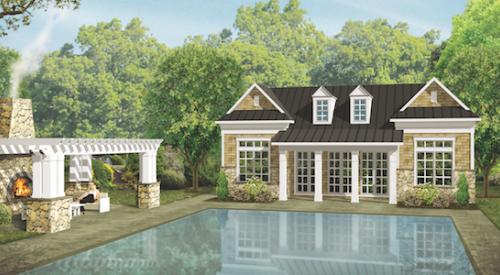|
Many markets across the country are in full retreat, especially where investors flipping houses drove annual price increases to unsustainable levels. With no one sure what a fair price looks like, potential buyers are sitting on their wallets as excess inventory stagnates — and some builders exacerbate the problem with massive discounting. It's happening even in markets where the local economy is booming.
If you're wondering what kind of product will finally entice buyers back into sales centers in such areas, here's our pick: New Urban Communities' Botanica, an infill masterpiece only blocks from the Intracoastal Waterway in Jupiter, Fla., north of West Palm Beach.
Risky LandThe space is part of a mixed-use development created on 143 acres of former MacArthur Foundation land the firm acquired in 2001 from WCI Communities. "It was zoned industrial," NUC partner Tim Hernandez recalls. "Only about 60 acres was buildable, and it had railroad tracks on one side and power lines running down the middle.
"WCI didn't want it, but they wouldn't sell it to us subject to approval. The risk of changing the land use and zoning was all on us," Hernandez says.
New Urban took that risk, then nursed the parcel through two years of entitlements, including environmental permitting through the Army Corps of Engineers and South Florida Water Management District. The zoning for the full site now allows 540 units, plus commercial space. New Urban sold off most of the land, including a cul-de-sac of large lots jutting into one of the lakes on the site, but Hernandez and partner Kevin Rickard hung onto 20 acres for the compact neighborhood of 123 rear-loaded, detached courtyard homes.
"We wanted to do something different from everybody else," says Hernandez. "Rear-loaded courtyard homes with optional guest quarters above the garage at the back of each lot fills that bill." For a crowning touch, the partners decided to shun South Florida's ever-present Mediterranean architecture for what Hernandez calls 'Anglo Caribbean' — a mix of brightly colored stucco and clapboard-sided two-story houses, some with metal roofs. The second stories, like the first, have concrete block walls.
   Lots in Botanica, an infill development in Jupiter, Fla. are 40 feet by 50 feet and cost about $120 a square foot to build. |
When housing markets contract, they do it geographically as well as figuratively. Subdivisions of tract houses far out of town are in trouble in many markets today. When the buyers come back, it will be for unique value they can't get in the resale market. Location leads the list of attributes. Striking architecture and a pedestrian-friendly land plan with urban attractions within walking distance are also near the top.
As their company's name implies, Hernandez and Rickard are dedicated new urbanists. With the town of Jupiter, the firm negotiated rentable auxiliary dwelling units above 28 of the 123 garages. The rest can have what NUC now calls "executive retreats"— guest quarters. The difference is subtle. The rentable form has a range, rather than a microwave oven, and a balcony, so there's slightly less interior space. "The town requires a certain percentage of useable outdoor space in relation to indoor for rental properties," Hernandez says.
Courtyard homes have become a popular product in Florida, especially for empty-nesters who want to do lots of entertaining. An L-shaped floor plan surrounding a pool creates a dynamite party house. But most Florida courtyard homes have the garage at the front (often flanked by a detached guest house). Visitors enter through a gate, and the front door is actually inside the courtyard. Houses have little curb appeal when the street scene is a sea of garages and the blank walls of guest houses facing internal courtyards. Botanica's lots are 40- to 50-feet wide. "With 5-foot side setbacks, that leaves 30 feet of width for half of our houses. If 20 feet of the width was taken up by the garage, how bad would that be?"
Instead, with the garage at the back, the front of the home can be devoted to traditional spaces buffered from the sidewalk and street by porches and balconies. The entertainment space around the pool is totally private, shielded by the house and garage on three sides, with a privacy fence filling the gap.
Shown here is the Cayman model, the largest floor plan at 3,639 square feet and decked out in striking orange stucco and a metal roof. It has a 17- by 5-foot covered porch off the breakfast nook that would normally be a $15,000 option, but it's required by Jupiter on corner-lot houses where that side of the house faces a street.
Only the family room and breakfast nook face the pool, while the traditional living room and a guest bedroom face the street downstairs. The master suite and three more bedrooms sit upstairs, and the only way to the executive retreat above the garage is through exterior stairs off the courtyard. It has a living room, bedroom, full bath and kitchenette (without range).
Halfway Home    Interior designer Michelle Palmer-Reich of The Interiors Gruop in Boca Raton, Fla., uses an eclectic, luxurious mix of furnishings in Botanica models to cater to diverse buyers. Photography: Scott Smith |
Botanica's pre-sales began in the spring of 2004 with eight floor plans ranging from 1,747 to 3,639 square feet and base-priced from $369,990 to $559,990. By the time two furnished models opened in May 2005, sales were booming and prices ranged $569,990 to $764,990. Sales agent Linda DeFrancis says it stayed that way until late last spring, long after the rest of South Florida's housing market crashed. "We were the last to feel it, and I think we'll be the first to recover," she says, but admits she spends her days now trying to hold onto the 62 sales Botanica still has.
DeFrancis believes as much as 30 percent of those buyers were investors. "We tried to screen them out, but they lied to us," she says, admitting that she'll have to sell against that competition when the market comes back. Rickard believes that may happen as soon as this winter's selling season. "Our traffic doubled in August, from July, and that was just as we were heading into hurricane season. Don't underestimate the impact that had this year. We had three hurricanes hit this coast in the last two years; a lot of people were waiting to see if it was going to be like that every year from now on," he says.
New Urban has backed away only slightly from peak pricing. The range is now $569,990 to $689,990 for six floor plans from 2,097 to 3,639 square feet. A small one-story plan and one other were eliminated from the mix.
"Lowering prices is not the answer," Rickard maintains. "As the master developer, our land basis in these houses is very low. We sold serviced lots to our home building operation for $65,000 to $75,000 apiece. We could win a price war, if it came to that. But we don't need to fire-sale this product. The location is too strong for that. When the market comes back, we'll be the first to know it."
New Urban has two spec homes — otherwise, no standing inventory. The firm builds the Botanica homes for hard costs averaging $120 a square foot.
 |
 |
 Botanica packs 123 rear-loaded homes - ranging from 2,097 to 3,639 square feet - onto 20 acres in the heart of Jupiter, Fla., blocks from the Intracoastal Waterway. The location attracts a mix of buyers. |
|
